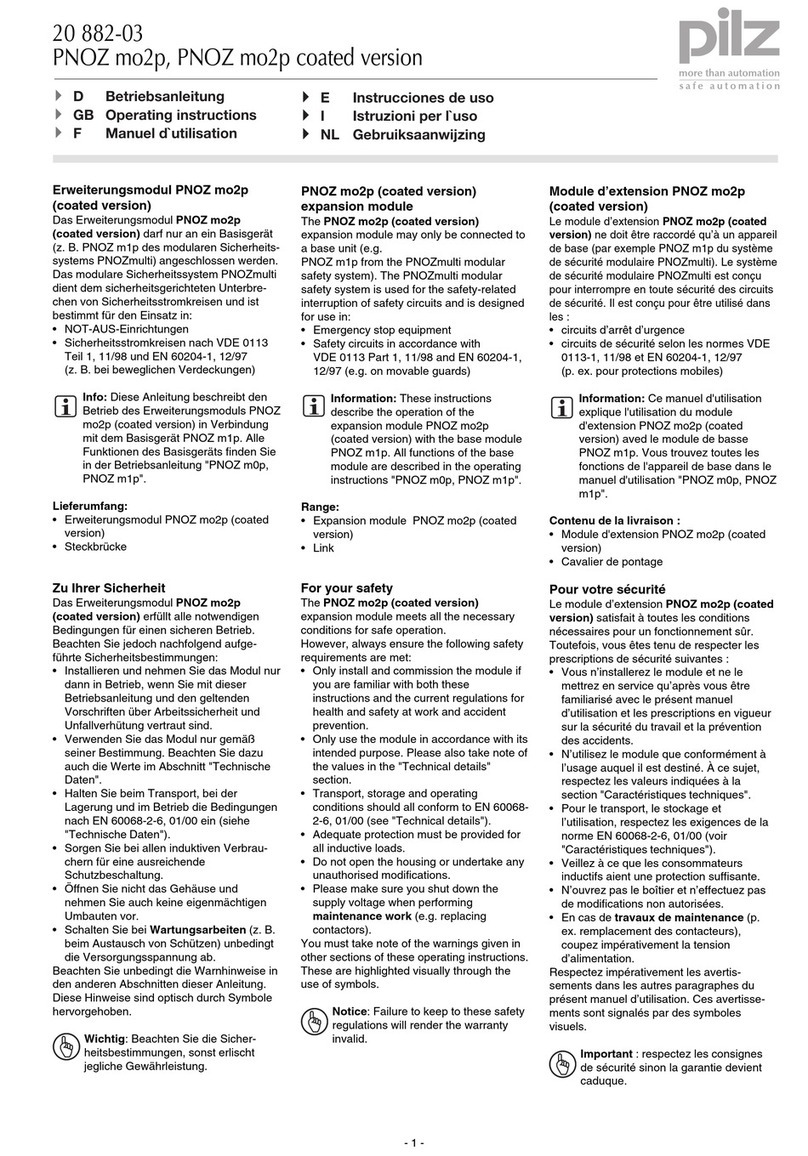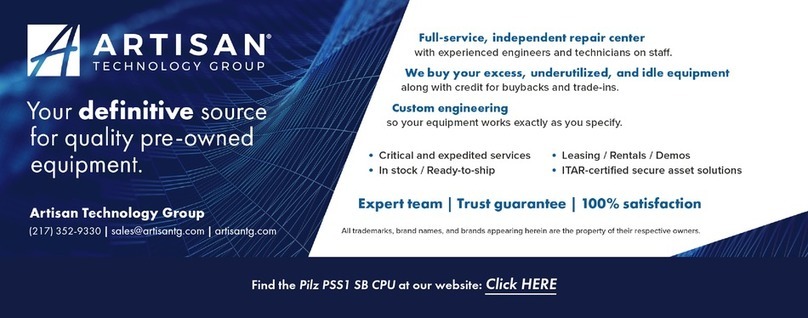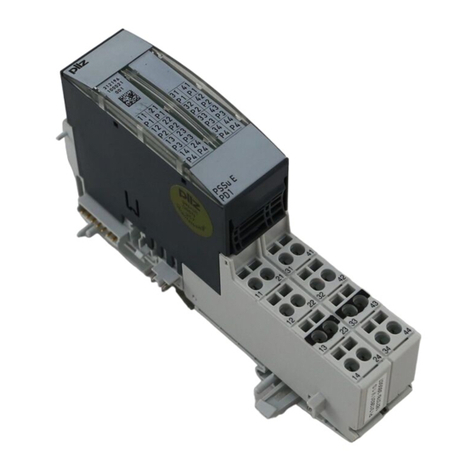Pilz PSSu E AI SHT2 User manual
Other Pilz Control Unit manuals
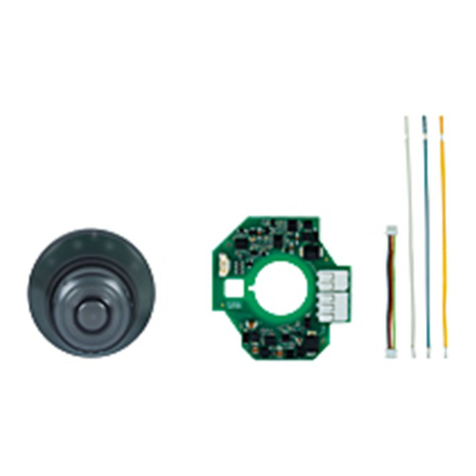
Pilz
Pilz PIT es Set10u-5c PCB User manual

Pilz
Pilz PSSu E F BSW User manual
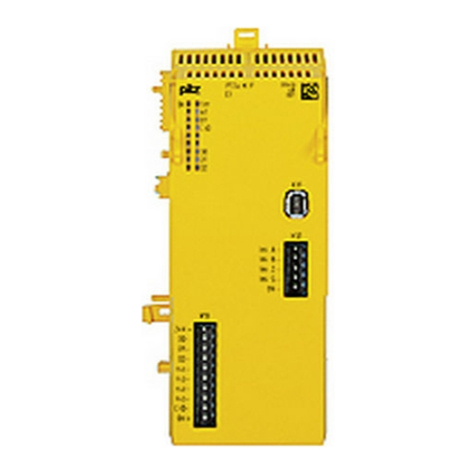
Pilz
Pilz PSSu K F EI User manual
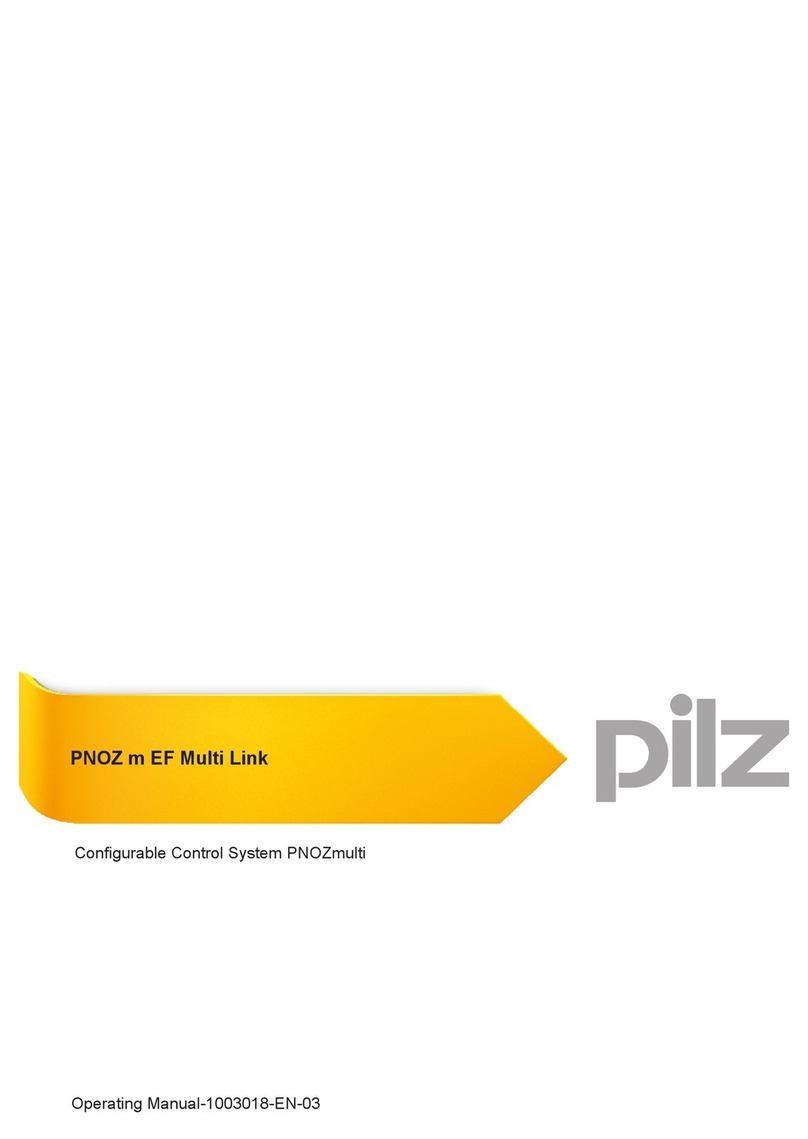
Pilz
Pilz PNOZ m EF Multi Link User manual
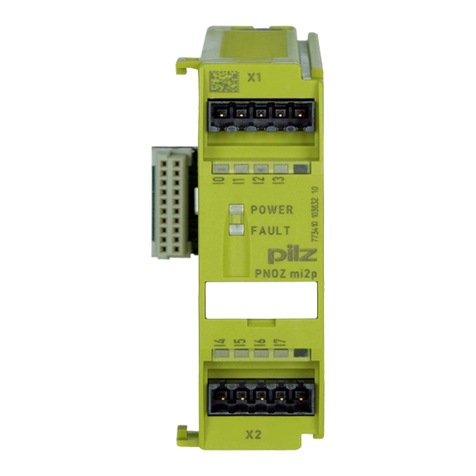
Pilz
Pilz PNOZ mi2p User manual
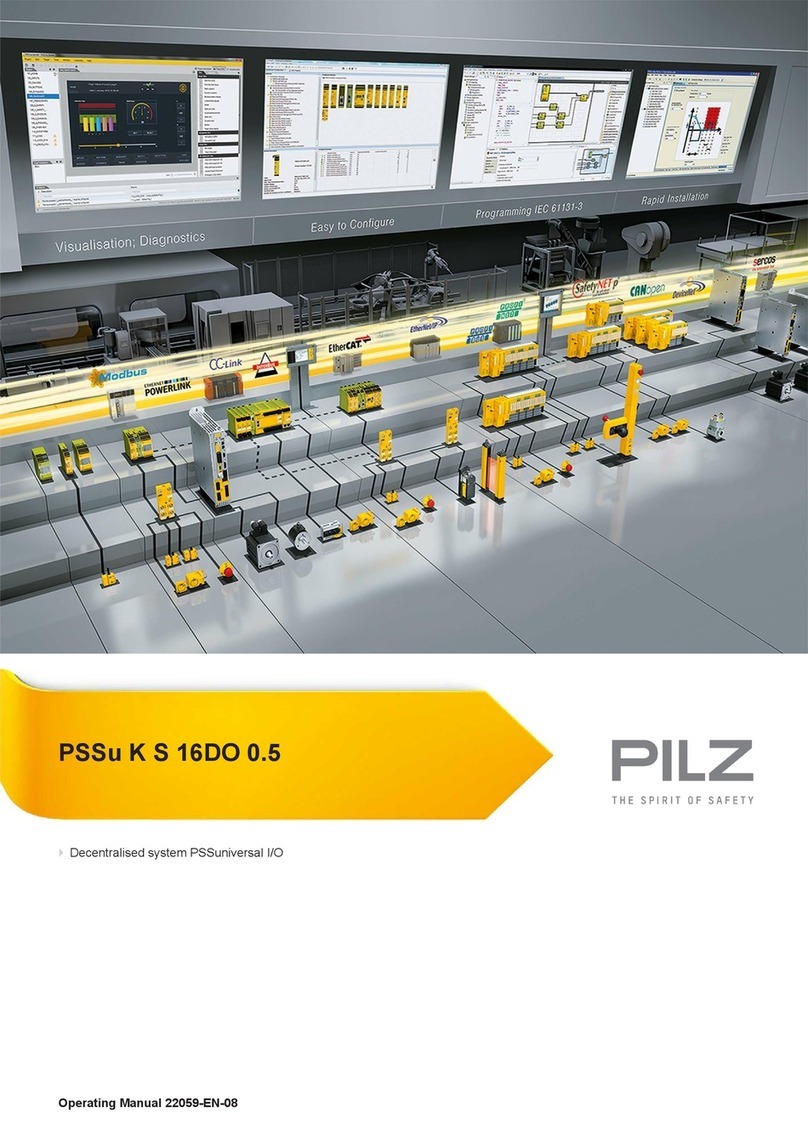
Pilz
Pilz PSSu K S 16DO 0.5 User manual

Pilz
Pilz PNOZ mc6p User manual
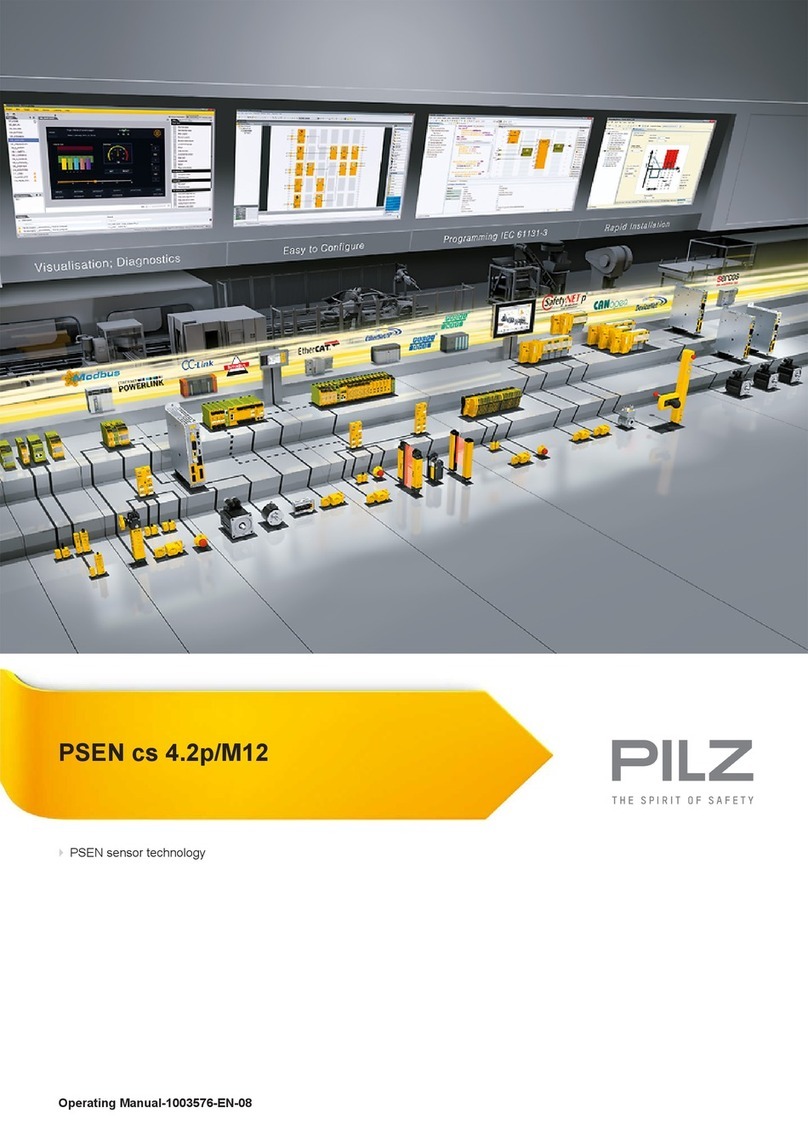
Pilz
Pilz PSEN cs 4.2p/M12 User manual
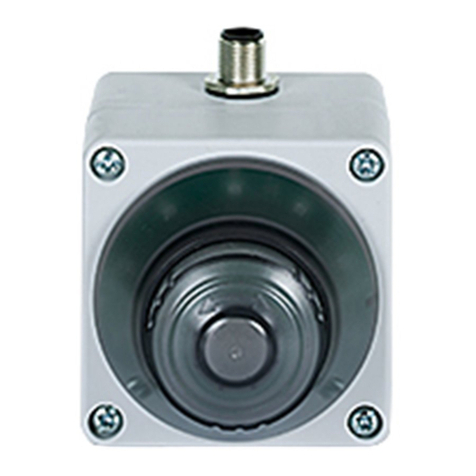
Pilz
Pilz PIT es Set10u-5ns (AIDA) basic User manual

Pilz
Pilz Motion Control PMC User manual

Pilz
Pilz PNOZ s11 User manual
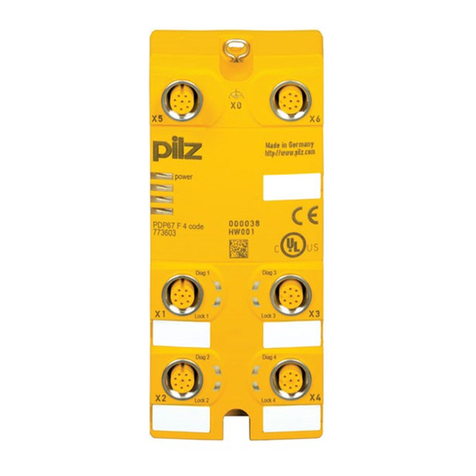
Pilz
Pilz PDP67 F 4 code User manual
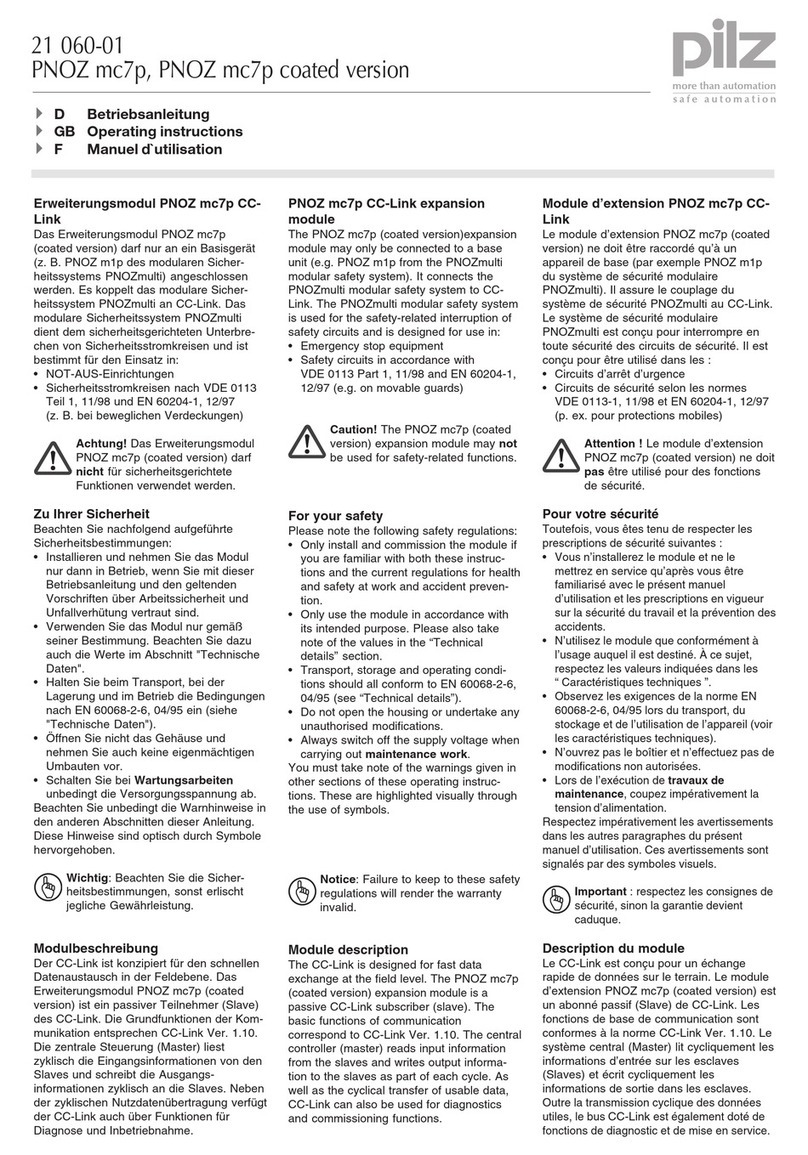
Pilz
Pilz PNOZ mc7p User manual
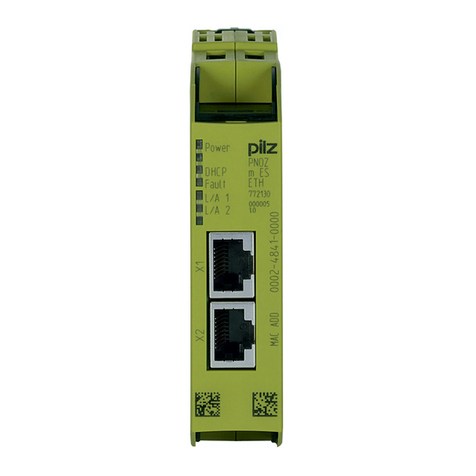
Pilz
Pilz PNOZ m ES ETH User manual

Pilz
Pilz PNOZ m ES ETH User manual

Pilz
Pilz PNOZ mmc1p User manual

Pilz
Pilz PMCtendo SZ User manual
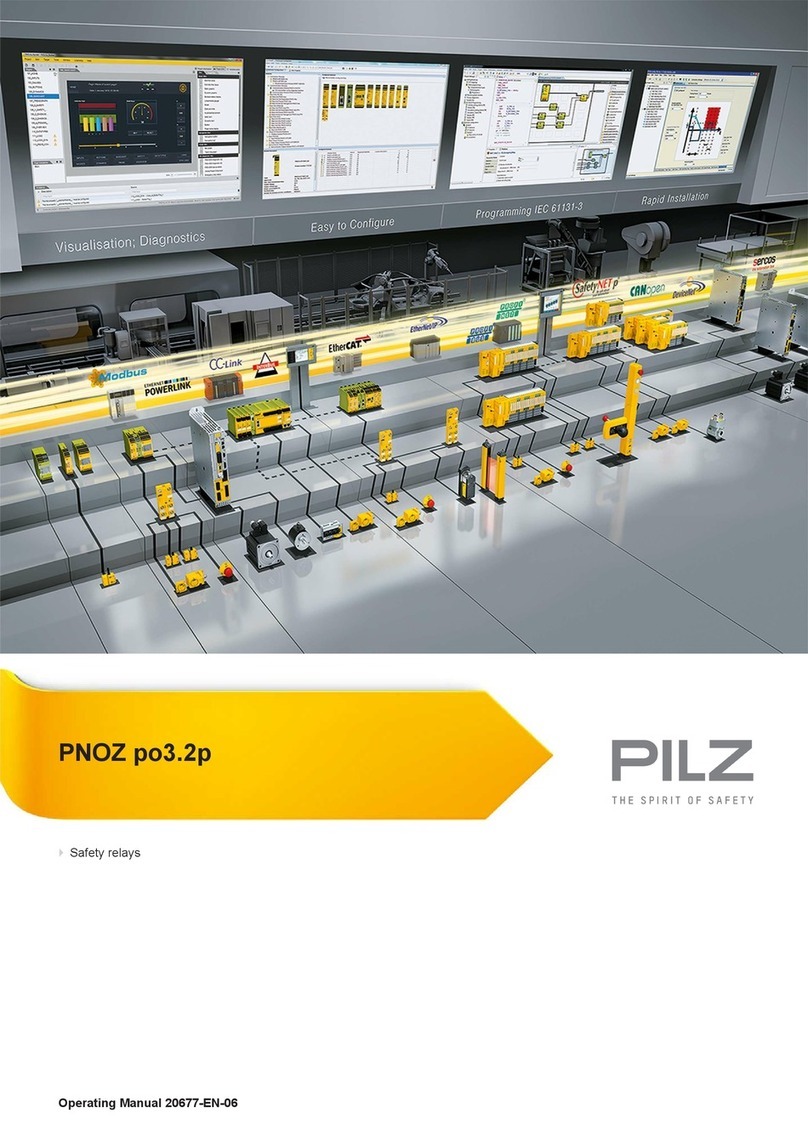
Pilz
Pilz PNOZ po3.2p User manual
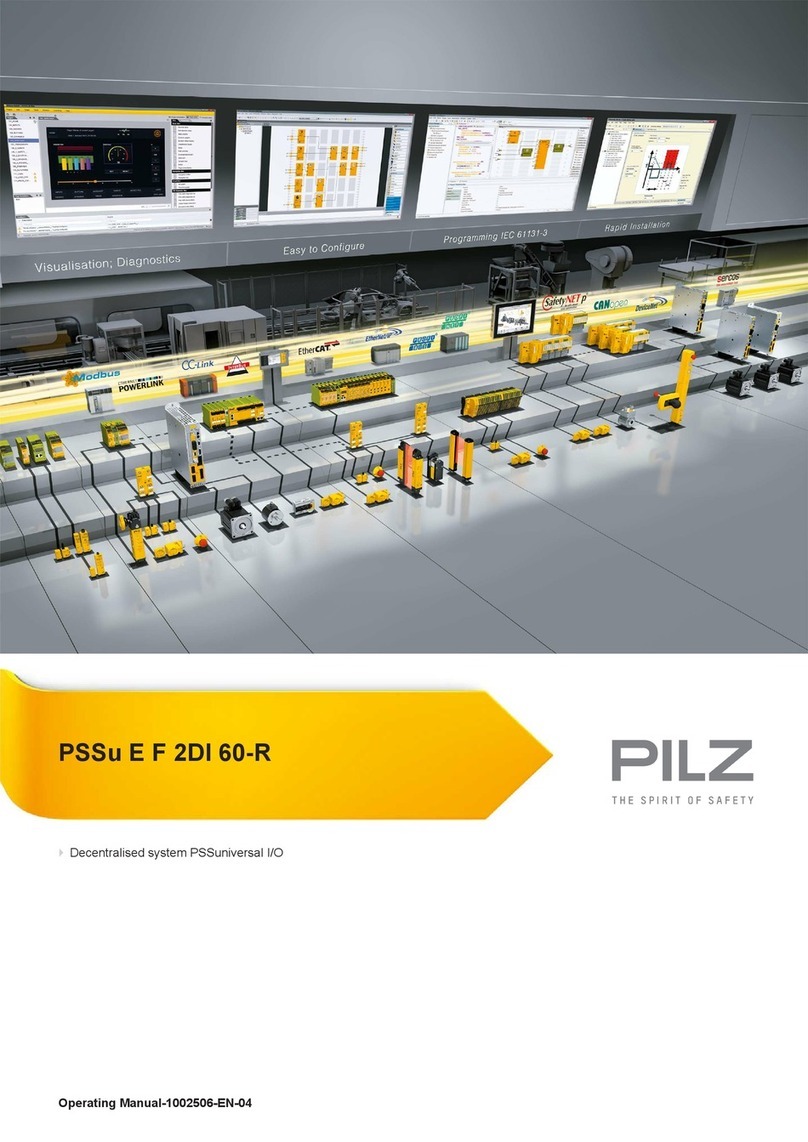
Pilz
Pilz PSSu E F 2DI 60-R User manual
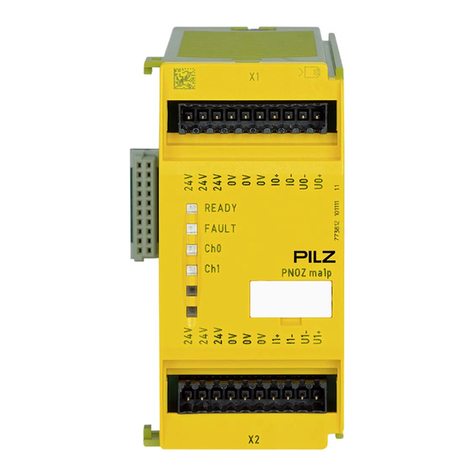
Pilz
Pilz PNOZ ma1p User manual
Popular Control Unit manuals by other brands

Festo
Festo Compact Performance CP-FB6-E Brief description

Elo TouchSystems
Elo TouchSystems DMS-SA19P-EXTME Quick installation guide

JS Automation
JS Automation MPC3034A user manual

JAUDT
JAUDT SW GII 6406 Series Translation of the original operating instructions

Spektrum
Spektrum Air Module System manual

BOC Edwards
BOC Edwards Q Series instruction manual

KHADAS
KHADAS BT Magic quick start

Etherma
Etherma eNEXHO-IL Assembly and operating instructions

PMFoundations
PMFoundations Attenuverter Assembly guide

GEA
GEA VARIVENT Operating instruction

Walther Systemtechnik
Walther Systemtechnik VMS-05 Assembly instructions

Altronix
Altronix LINQ8PD Installation and programming manual

